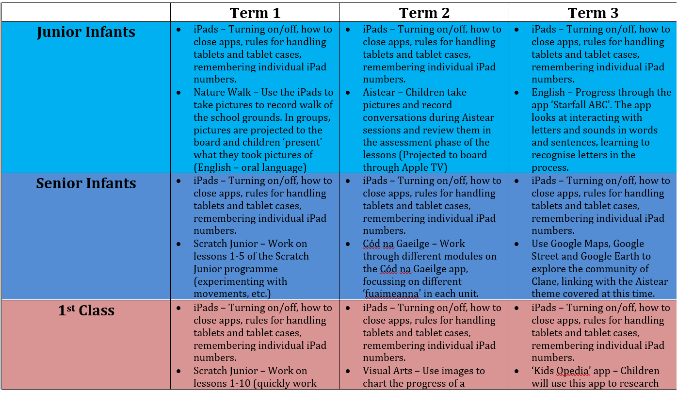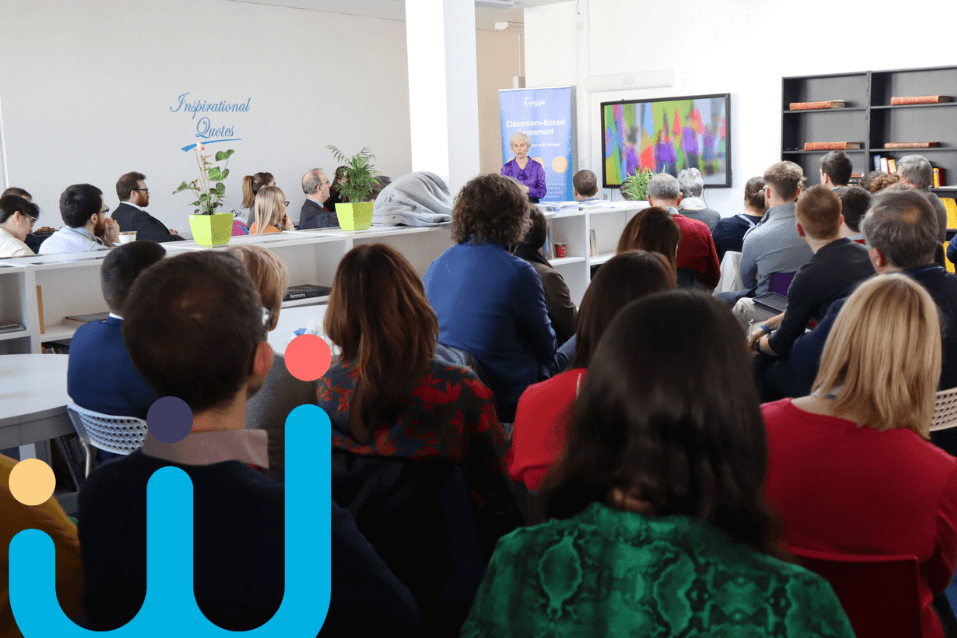By Eoghan O Neill
‘Technology will not replace great teachers, but technology in the hands of great teachers can be transformational’
From a professional point of view, I agree wholeheartedly with the above statement. I have always believed that technology has the potential to transform learner experiences. When I was appointed as an assistant principal in 2018, I was given the responsibility of leading digital learning in my primary school. In an all-boys school of 530 pupils, this was a considerable logistical and organizational challenge.
Step 1: Analysing Policy Documents
The Department of Education and Skills has recently begun to recognize the importance of digital learning in preparing our young people for a 21st-century workforce. The Digital Strategy for Schools (2015-2020) was a significant policy document and one which promised much in terms of technological developments in our schools. My vision for education is child-centered and the same is the case with my vision for digital technology use. I believed that it was imperative to have enough devices for every child in a class (obviously, to be rotated between classes over the course of a week). In consultation with the principal and other teachers in the school, we made a significant investment in 64 digital devices, which were split evenly between the junior and senior ends of the school.

Step 2: Appropriate Use of Digital Devices
Simply purchasing technological devices, however, is not going to bring about change and develop digital skills or 21st-century learning environments. As we all know, certain barriers can present themselves in schools as part of digital transformation processes. Many teachers lack the confidence to integrate technology into their classroom practice, despite more focus on initial teacher education (ITE) and increased levels of CPD. The Wriggle Connect platform can be used to positive effect in this regard, allowing teachers to upskill easily in short blasts at a time that suits them. Sharing good practices and internal CPD in schools is also crucial as this can be tailored exactly to the needs of the school at a particular time.

Step 3: Removing Barriers
One of the key roles of leadership in schools is how we can remove some of the barriers that stand in the way of change. New initiatives like the Digital Learning Framework, Primary Language Curriculum and Wellbeing Frameworks are all positive moves, but teachers often feel like there is no time for some of these ‘extras’. This was one of the central barriers identified in the 2013 Census of ICT Use in Irish Schools. I was very conscious that the increased use of digital technologies in my school would not be seen as an ‘extra burden’ for teachers. This was key in turning a vision into the lived reality of everyday school life. To do this, I consulted with teachers about the various topics that they cover at each class level during the year. After collecting this information, I designed a whole-school plan for technology use to complement the ‘Teaching and Learning domain of the Digital Learning Framework.
Step 4: Involving the School Community
Each class was required to complete one activity (at least) per term in year 1 (2019/2020). Crucially, these activities were all things that were being done already by teachers and could be integrated with technologies to improve the digital skills of our learners. This removed the idea of ‘not having enough time to use technology in classrooms. It was also a modest start, with one activity per term not overwhelming any member of staff. Each summer, the teachers from all class groups will sit down and add one more activity for each term – this process will continue until 2023/2024 when classes have 5 activities per term. Unfortunately, this has been pushed back one year due to the school closures brought about by Covid-19. Having devised this plan and vision, I am now passing responsibility over to the teachers of the school to carry on this work. They will come up with their own activities for the next 4 years, which should lead to greater investment in the process.

Step 5: Leading from the Front
One of the central tenets of Looking at Our Schools (2016) is for school leaders to ‘act in the capacity of lead practitioner’. As the person in my school with the primary responsibility for leading digital learning, I have made myself available for answering questions, troubleshooting problems, providing assistance and organizing training. Essentially, you need individuals who are willing to ‘walk the walk’ if a vision is going to become a reality. I also ensure that the devices are delivered to each classroom fully charged and ready for use at the same time each week. Maintaining the health and performance of devices is extremely important – slow, lethargic devices add another barrier to effective integration.

Step 6: Looking to the Future
Covid-19 has brought about change at an unprecedented rate in education. However, for the most part, I feel that this has been a positive change. We must carry this momentum forward. There is not a teacher in the country that hasn’t upskilled over the past year in their use of digital technology. We cannot allow this progress to stall. Society and modern workplaces now rely so much on technology, and as school leaders and teachers, we must do everything we can to prepare our students for a 21st-century working environment.

